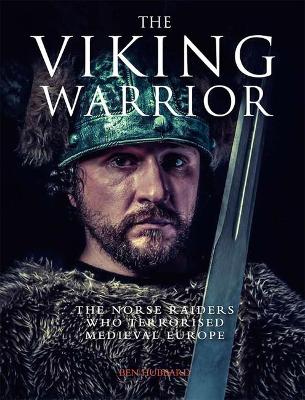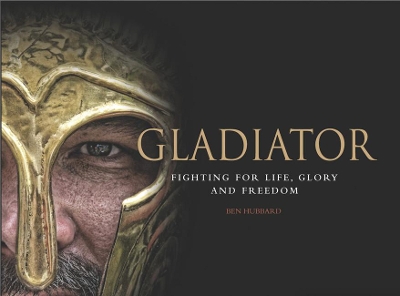Landscape History
3 total works
"...and they laid all waste with dreadful havoc, trod with unhallowed feet the holy places, dug up the altars, and carried off all the treasures of the holy church. Some of the brethren they killed; some they carried off in chains; many they cast out, naked and loaded with insults; some they drowned in the sea." -Simeon of Durham, A History of the Community of Durham
Beginning in 789 CE, the Vikings raided monasteries, sacked settlements and invaded the Atlantic coast of Europe and the British Isles. They looted and enslaved their enemies, terrorizing all whom they encountered.
But that is only part of their story. Sailing their famous longboats, they discovered Iceland and North America, colonised Greenland, founded Dublin, and also sailed up the River Seine and besieged Paris. They settled from Newfoundland to Russia, conquered eastern England, and fought battles from Ireland to the Caspian Sea. They traded walruses with Inuits, brought Russian furs to Western Europe and took European slaves to Constantinople. Their graves contain Arab silver, Byzantine silks and Frankish weapons and artefacts.
Illustrated with more than 200 maps, photographs and artworks, The Viking Warrior examines these fearsome warriors through their origins, social structure, raiding culture, weapons, trading networks and settlements.
Beginning in 789 CE, the Vikings raided monasteries, sacked settlements and invaded the Atlantic coast of Europe and the British Isles. They looted and enslaved their enemies, terrorizing all whom they encountered.
But that is only part of their story. Sailing their famous longboats, they discovered Iceland and North America, colonised Greenland, founded Dublin, and also sailed up the River Seine and besieged Paris. They settled from Newfoundland to Russia, conquered eastern England, and fought battles from Ireland to the Caspian Sea. They traded walruses with Inuits, brought Russian furs to Western Europe and took European slaves to Constantinople. Their graves contain Arab silver, Byzantine silks and Frankish weapons and artefacts.
Illustrated with more than 200 maps, photographs and artworks, The Viking Warrior examines these fearsome warriors through their origins, social structure, raiding culture, weapons, trading networks and settlements.
During Japan's Warring States period, centuries of strife had left the country divided and leaderless. Those who filled the power vacuum were the daimyo, warlords who ruled over the clans and provinces of Japan. Serving their daimyo, the samurai were the ultimate warriors at a time when military prowess won out over hereditary power and position. The nature of warfare itself changed-romantic ideas of mounted duels and battlefield decorum became as rare as aristocratic samurai leaders. Marching in to replace them were the common foot soldiers, the ashigaru, armed with pikes and matchlock rifles.
The Samurai Warrior examines the fighting men of this key period in Japanese history. Divided into six chapters, the book describes the unification under the Tokugawa bakufu, the major battles of the era, the weapons and armor used, the social structure of Japanese society, myths about the samurai, and finally the decline of the samurai amidst the modernization of the Meiji period.
Including more than 200 photographs, illustrations, paintings, and maps, The Samurai Warrior is a colorful, accessible study of Japan's famous but often misunderstood warrior elite.
The Samurai Warrior examines the fighting men of this key period in Japanese history. Divided into six chapters, the book describes the unification under the Tokugawa bakufu, the major battles of the era, the weapons and armor used, the social structure of Japanese society, myths about the samurai, and finally the decline of the samurai amidst the modernization of the Meiji period.
Including more than 200 photographs, illustrations, paintings, and maps, The Samurai Warrior is a colorful, accessible study of Japan's famous but often misunderstood warrior elite.
He vows to endure to be burned, to be bound, to be beaten, and to be killed by the sword. - Gladiator's oath according to Petronius. Pure unadulterated murder - Seneca's opinion of gladiatorial games. Gladiatorial combat is one of the most defining images of ancient Rome. It encapsulated the brutality of Rome, the importance of public life, and the organisation and stratification in Roman society. One day at Rome's Colosseum, 3000 men fought; on another 9000 animals were killed. But the games weren't just for Rome: it's estimated that across the Republic, 8000 people died a year in gladiatorial games and that there were 400 gladiatorial arenas throughout the Roman Empire. Gladiator looks at life and service in the Roman arenas from the origins of the games in the 3rd century BC through to the demise of the games and the Empire in the fifth century AD. It explores the lives of the prisoners of war, criminals and also volunteers who became gladiators, their training and the more than 20 types of gladiator they could be, fighting with different weapons against each other or animals. From Spartacus's Slave Revolt to the real Emperor Commodius who liked to play at being a gladiator, from female gladiators to the emancipation of successful gladiators, from their armour to their tactics to their lifespan, Gladiator is a masterful examination of this fascinating world. Including more than 200 photographs, illustrations, paintings, and maps, Gladiator is an exciting and insightful exploration of the political theatre of the Roman arenas 2000 years ago, where the lowliest in society might just become heroes.


